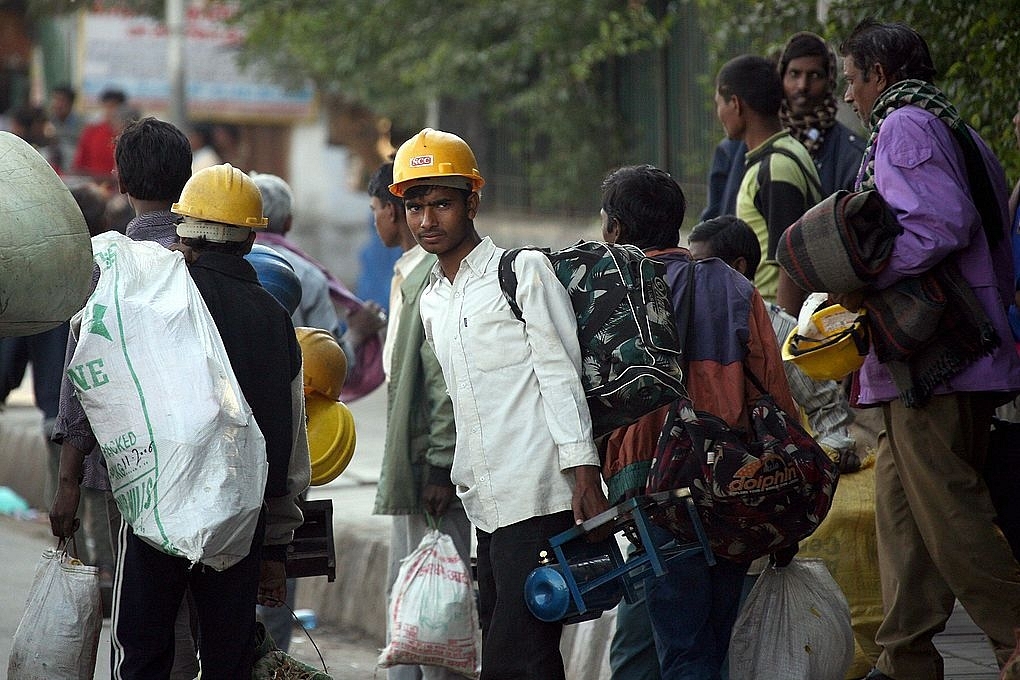Ideas
An Urban MGNREGA Need Not Be A Boondoggle Like The Rural One
- The urban poor don’t need the equivalent of a rural MGNREGA. But they would benefit from subsidised social security payments and formalisation of payrolls, and wage subsidies.

Urban workers. (Representative Image)
The Chief Economic Advisor, Krishnamurthy Subramanian, in a well-articulated article in The Times of India today (30 June), has explained why the Finance Minister chose to offer credit guarantees to microfinance institutions lending to the urban poor instead of straightforward cash payouts.
The reason, he says, is to ensure that only genuinely distressed borrowers get their loans written off at some future date, when they default.
For microfinance borrowers, defaults come with a cost, since even after a writeoff lenders tend to reduce their exposures to past defaulters. So, borrowers who default have to pay a price in terms of eligibility for future loans.
If credit to the urban poor is guaranteed, those who are not at risk of default will not borrow now in view of this potential threat to their credit rating; those who believe they can repay after a while, may borrow, but they will not suffer any downgrading for future loans.
Only those in big distress, who will have to default even after obtaining a new loan, will risk defaults. This way the real cash doles go only to the genuinely distressed, and not all and sundry. It is an indirect cash dole to the urban poor who are most eligible for a cash handout.
One hopes that the scheme works the way the Finance Ministry expects it to, but it is more difficult to agree with another idea of the CEA, that an urban-equivalent of the rural employment guarantee scheme (MGNREGA) is not needed.
Subramanian says that while MGNREGA has major inefficiencies, it is still only a seasonal scheme unlike in urban areas, where jobs are not seasonal. So, there is no point in starting another entitlement scheme that will be politically difficult to terminate later. MGNREGA is now a permanent fixture on the rural landscape.
However, it is not necessary to design an urban MGNREGA in the same way as the rural one. It need not be an entitlement to work come what may. It can be designed as a private employment booster programme.
The urban jobs problem, both before and after the pandemic, is simply defined. One is informality and lack of social security. The other is an employer penchant for automation where possible.
With Covid making normal working in offices, factories and in the services sector difficult, most employers will be looking to replace workers with automation, where possible. Workers are not just an additional cost, they can be a threat to public health too.
What an urban MGNREGA needs to do is to counter these trends.
Two ways of doing this will be to subsidise social security payments for all additional permanent staff added by urban companies. The second way is to actually subsidise wages for employers willing to take on more temporary or permanent labour.
The downside is in monitoring this scheme, since Indian employers are quite capable of gaming the system by creating ghost workers on their payrolls just to collect the subsidies. But with JAM (Jan Dhan-Aadhaar-Mobile) cross-checks, and additional social audits, this can be kept to a minimum.
The urban poor don’t need the equivalent of a rural MGNREGA. But they would benefit from subsidised social security payments and formalisation of payrolls, and wage subsidies that enable employers to slow down the replacement of labour with automation and technology.
Support Swarajya's 50 Ground Reports Project & Sponsor A Story
Every general election Swarajya does a 50 ground reports project.
Aimed only at serious readers and those who appreciate the nuances of political undercurrents, the project provides a sense of India's electoral landscape. As you know, these reports are produced after considerable investment of travel, time and effort on the ground.
This time too we've kicked off the project in style and have covered over 30 constituencies already. If you're someone who appreciates such work and have enjoyed our coverage please consider sponsoring a ground report for just Rs 2999 to Rs 19,999 - it goes a long way in helping us produce more quality reportage.
You can also back this project by becoming a subscriber for as little as Rs 999 - so do click on this links and choose a plan that suits you and back us.
Click below to contribute.
Latest